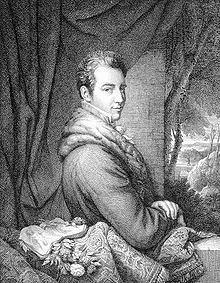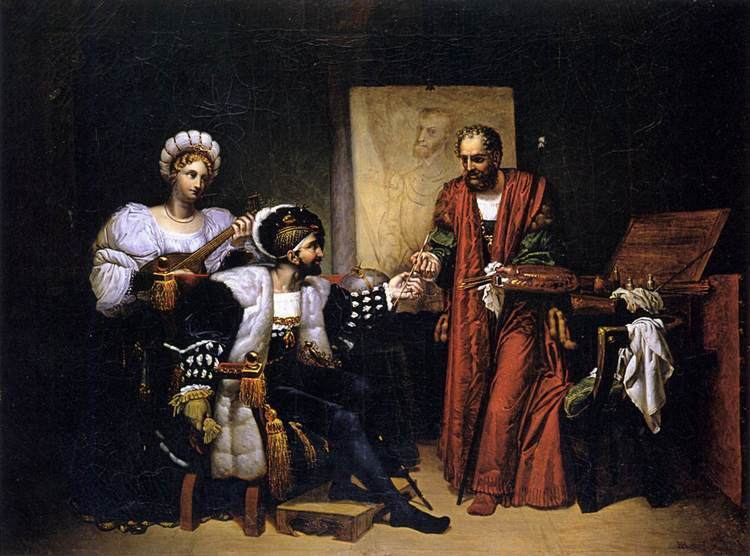Name Pierre-Nolasque Bergeret | ||
 | ||
Died February 21, 1863, Paris, France | ||
Pierre-Nolasque Bergeret (30 January 1782, Bordeaux – 21 February 1863, Paris) was a French painter, pioneer lithographer and designer who studied with Jacques-Louis David.

He was born in Bordeaux, where he received his early training, then moved to Paris, where he worked in the ateliers of François-André Vincent and then David, where he met François Marius Granet and Jean-Auguste-Dominique Ingres. Bergeret played a major role in introducing lithography, in part through his reproductive prints after paintings by Nicolas Poussin and Raphael: his lithograph Mercury (1804), reproducing a detail from Raphael’s fresco in the Villa Farnesina, and his caricature of current Paris fashion, Le Suprême Bon Ton Actuel (by 1805) are among the earliest examples of lithographic technique.
Bergeret was commissioned to design Napoleonic medals, or provide frieze-like panels en camaïeu to be painted on Sèvres porcelains and to provide designs for the bas-reliefs on the Column in the Place Vendôme, built 1806–11 in direct competition with Trajan's Column in Rome. The Column has had a checkered career, destroyed and replaced twice.
The subjects of his paintings tend towards the vividly anecdotal. He was early among artists drawing subject matter from the culture of the Renaissance, in the style Troubadour: Honors Rendered to Raphael on His Deathbed 1806 (Allen Art Museum, Oberlin College, Ohio). Charles V Picking up Titian's Brush 1808; Anne Boleyn Condemned to Death ca. 1814 (Musée du Louvre); Aretino in the Studio of Titian ca 1822; Fra Lippo Lippi Enslaved in Tangiers, Painting a Portrait of His Captor ca 1819; Another major history painting by Bergeret is Marius Meditating on the Ruins of Carthage. Other typical subjects are propagandistic allegories and representations of current events of the French Empire.
